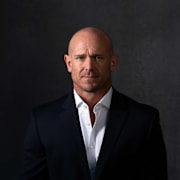Navigating the Waves: The Rules and Realities of Competitive Wake Surfing

Wake surfing is a unique and growing water sport. For competitors like seven-time world champion Ashley Kidd, the conditions can vary as much as the waves. One of the most intriguing aspects of competitive wake surfing lies in the strict rules that govern the boats and settings athletes must contend with. In a recent video, Ashley Kidd breaks down these rules and sheds light on how the boat manufacturer, wave settings, and other variables can influence a rider's performance.
In wake surfing competitions, athletes don’t get to bring their own boat or choose the model they want to ride behind. "Whoever is sponsoring the competition, that's the boat you're riding behind, and everyone's riding behind that same boat," Kidd explains. Whether it’s Mastercraft, Nautique, Centurion, or Malibu, the event organizers determine the boat model. The boat is a crucial element in wake surfing, generating the wake—or the artificial wave—riders surf on.
While competitors don't have control over the boat's make, they can adjust the wave's speed and steepness. "You can start with your preferred settings at the beginning of your pass, but if you don't like it during your run, you can mess with the wave, but it's taking up your time," says Kidd. This restriction forces athletes to be precise from the outset, making preparation and experience essential.
The importance of boat technology in wake surfing cannot be understated. Modern wake boats are outfitted with sophisticated systems that allow for adjustable ballast, speed control, and wave-shaping devices. These elements create a tailored wave for riders, which can be tweaked to suit individual preferences and styles. For example, a steeper wave may be more favorable for performing aerial tricks, while a longer, gentler wave might support carving and smooth turns.
Manufacturers like Mastercraft and Nautique have become dominant players in wake surfing, with their boats specifically designed for the sport. Ski boats like the Mastercraft XT23, which Kidd herself endorses with her signature edition, have customizable settings that let riders fine-tune their experience. These technological advancements allow for greater control but also introduce an element of unpredictability since riders don't always know how the boat will perform in competition until they're on the water.
Another critical component to a successful ride is the boat driver, or "wheelman." While riders don't get to choose who drives during competitions, Kidd notes that consistency is maintained by having the exact driver for all competitors. This ensures that every rider faces the same conditions, which levels the playing field. However, subtle differences in driving styles, wave formation, and water conditions can still make each ride unique.
Wake surfing competitions test more than just a rider's physical skills—they challenge athletes to adapt to the tools and conditions provided. As Ashley Kidd describes, these factors create a layer of complexity and strategy in the sport. Riders must balance their abilities with the constraints of the boat and wave settings, showcasing their athleticism and adaptability in the face of constantly changing variables.
For fans of wake surfing and aspiring athletes, understanding these rules provides deeper insight into just how challenging and technical the sport can be. It's not just about the rider on the board—mastering every element, from the boat to the wave, and making the most of every run. As Ashley Kidd has proven time and again, those who can navigate these complexities with precision and skill are the ones who rise to the top.
For more on Ashley and her Mastercraft campaign, please visithttps://www.mastercraft.com/athletes/ashley-kidd/.
